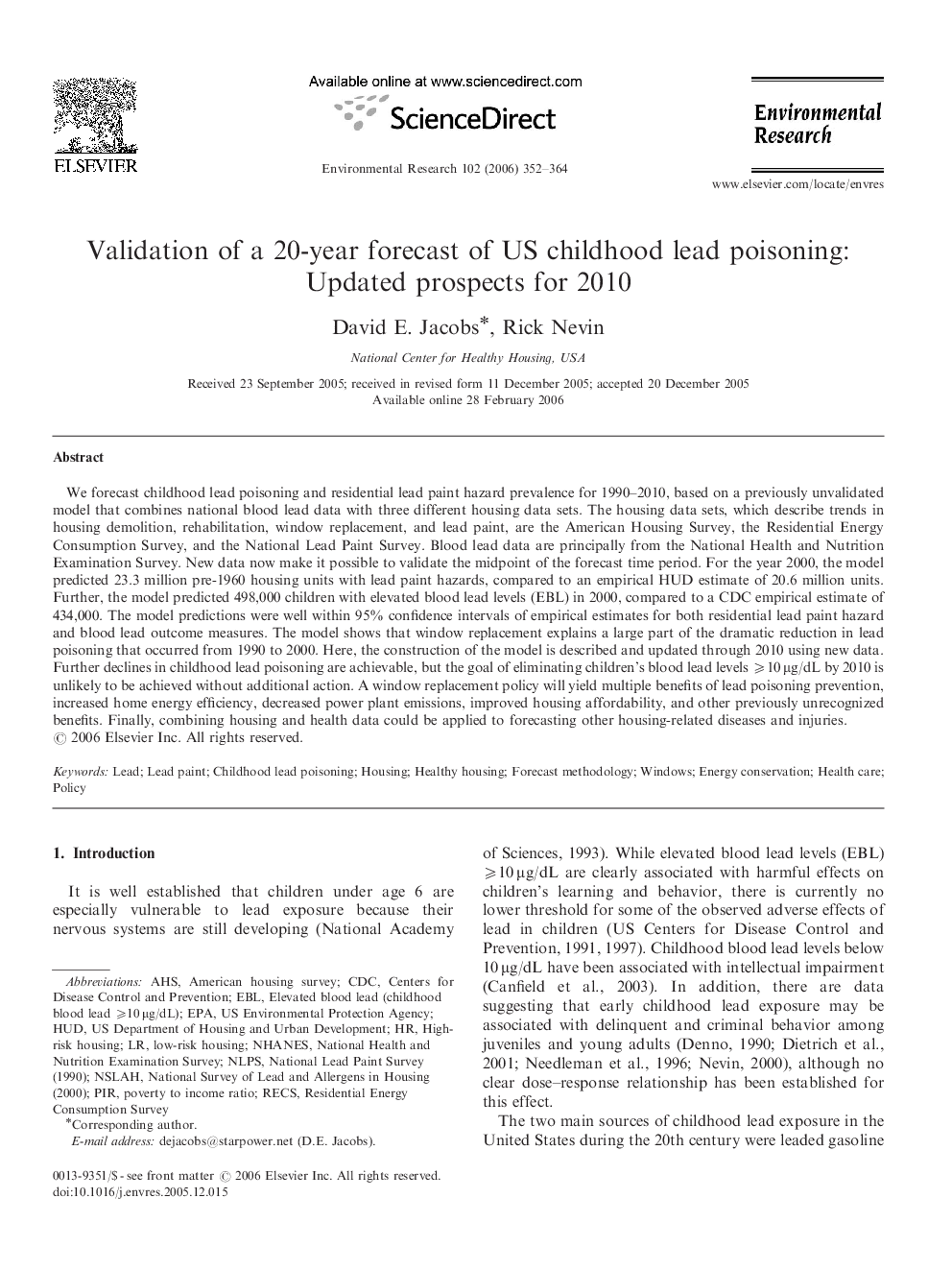| کد مقاله | کد نشریه | سال انتشار | مقاله انگلیسی | نسخه تمام متن |
|---|---|---|---|---|
| 4470598 | 1314433 | 2006 | 13 صفحه PDF | دانلود رایگان |

We forecast childhood lead poisoning and residential lead paint hazard prevalence for 1990–2010, based on a previously unvalidated model that combines national blood lead data with three different housing data sets. The housing data sets, which describe trends in housing demolition, rehabilitation, window replacement, and lead paint, are the American Housing Survey, the Residential Energy Consumption Survey, and the National Lead Paint Survey. Blood lead data are principally from the National Health and Nutrition Examination Survey. New data now make it possible to validate the midpoint of the forecast time period. For the year 2000, the model predicted 23.3 million pre-1960 housing units with lead paint hazards, compared to an empirical HUD estimate of 20.6 million units. Further, the model predicted 498,000 children with elevated blood lead levels (EBL) in 2000, compared to a CDC empirical estimate of 434,000. The model predictions were well within 95% confidence intervals of empirical estimates for both residential lead paint hazard and blood lead outcome measures. The model shows that window replacement explains a large part of the dramatic reduction in lead poisoning that occurred from 1990 to 2000. Here, the construction of the model is described and updated through 2010 using new data. Further declines in childhood lead poisoning are achievable, but the goal of eliminating children's blood lead levels ⩾10 μg/dL by 2010 is unlikely to be achieved without additional action. A window replacement policy will yield multiple benefits of lead poisoning prevention, increased home energy efficiency, decreased power plant emissions, improved housing affordability, and other previously unrecognized benefits. Finally, combining housing and health data could be applied to forecasting other housing-related diseases and injuries.
Journal: Environmental Research - Volume 102, Issue 3, November 2006, Pages 352–364